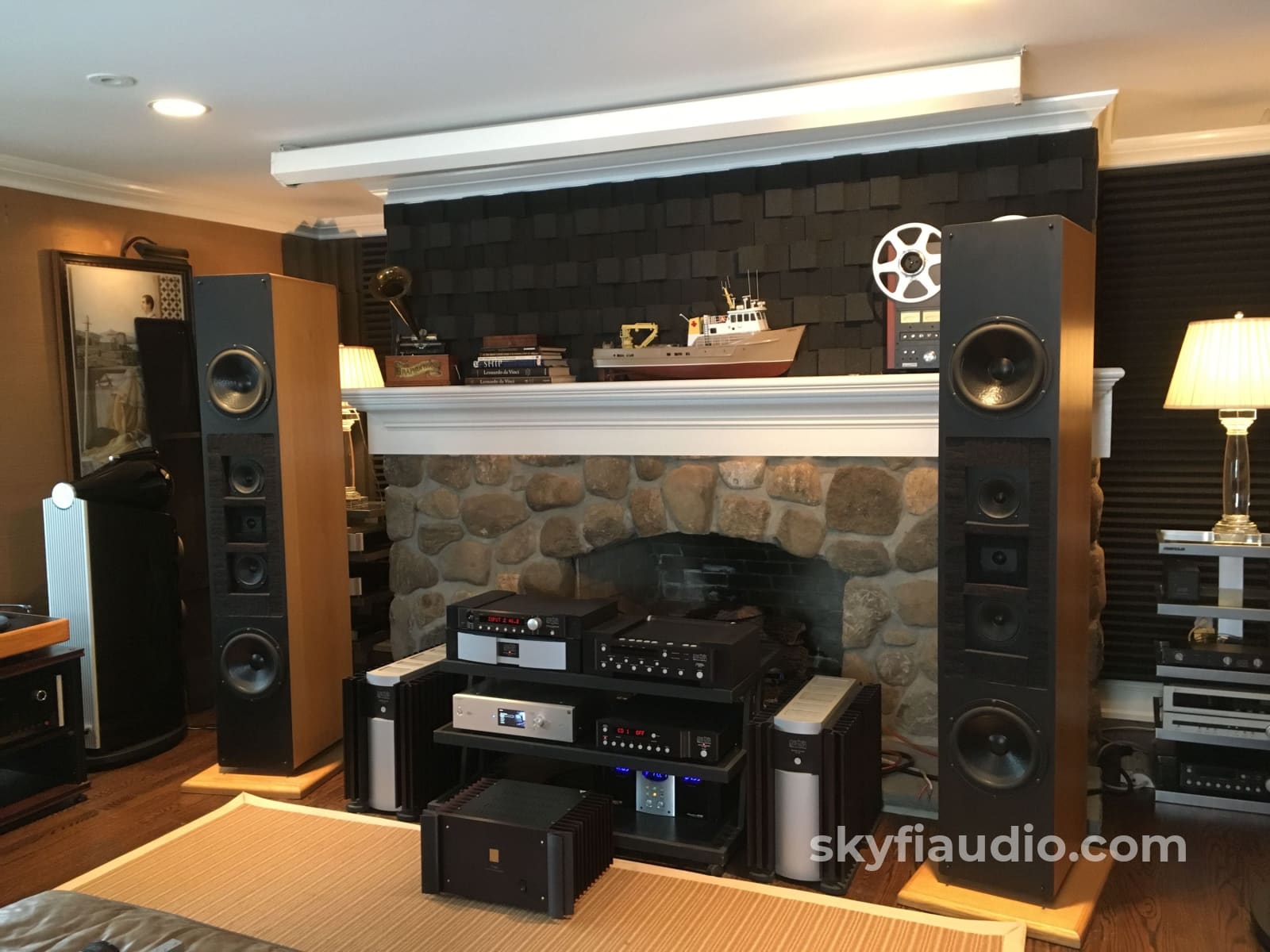
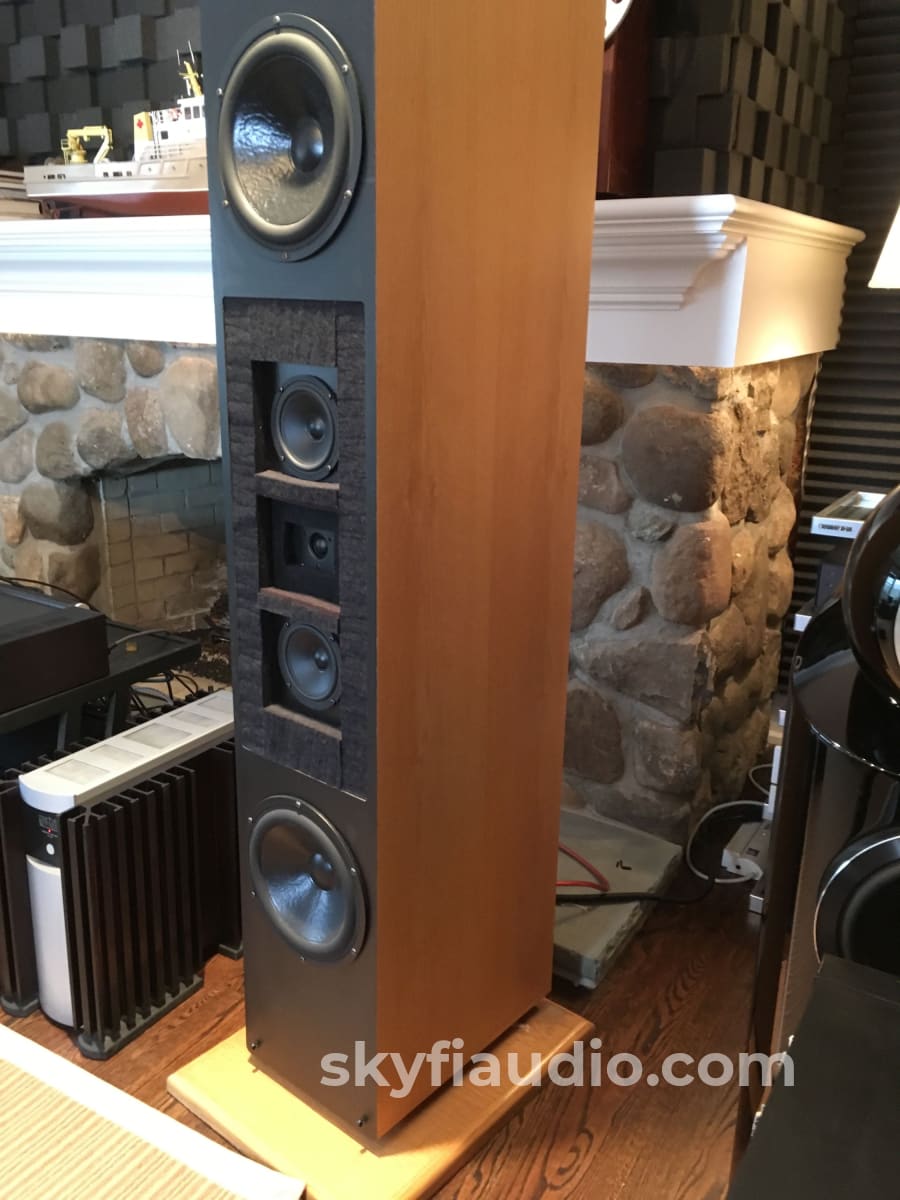
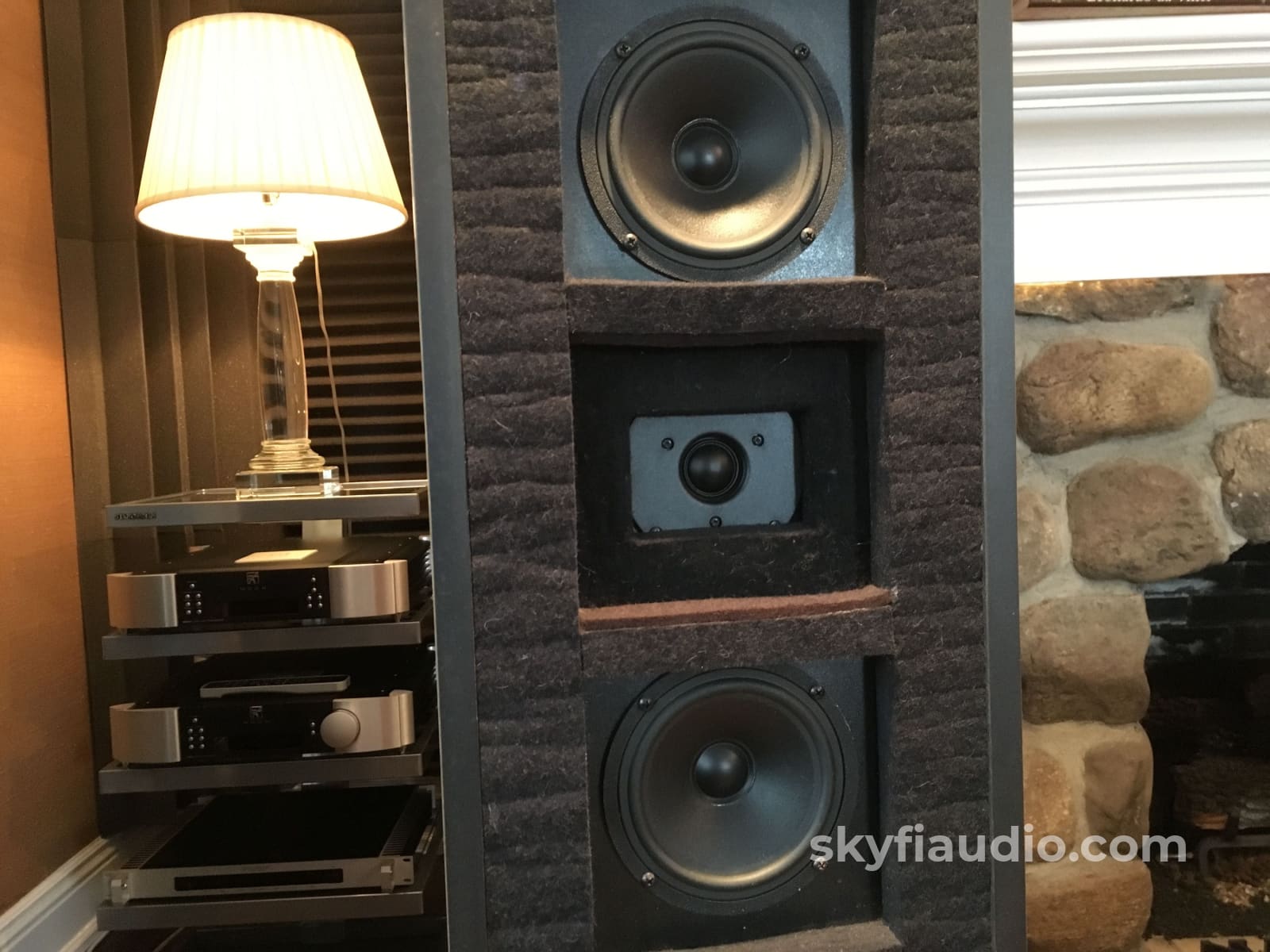
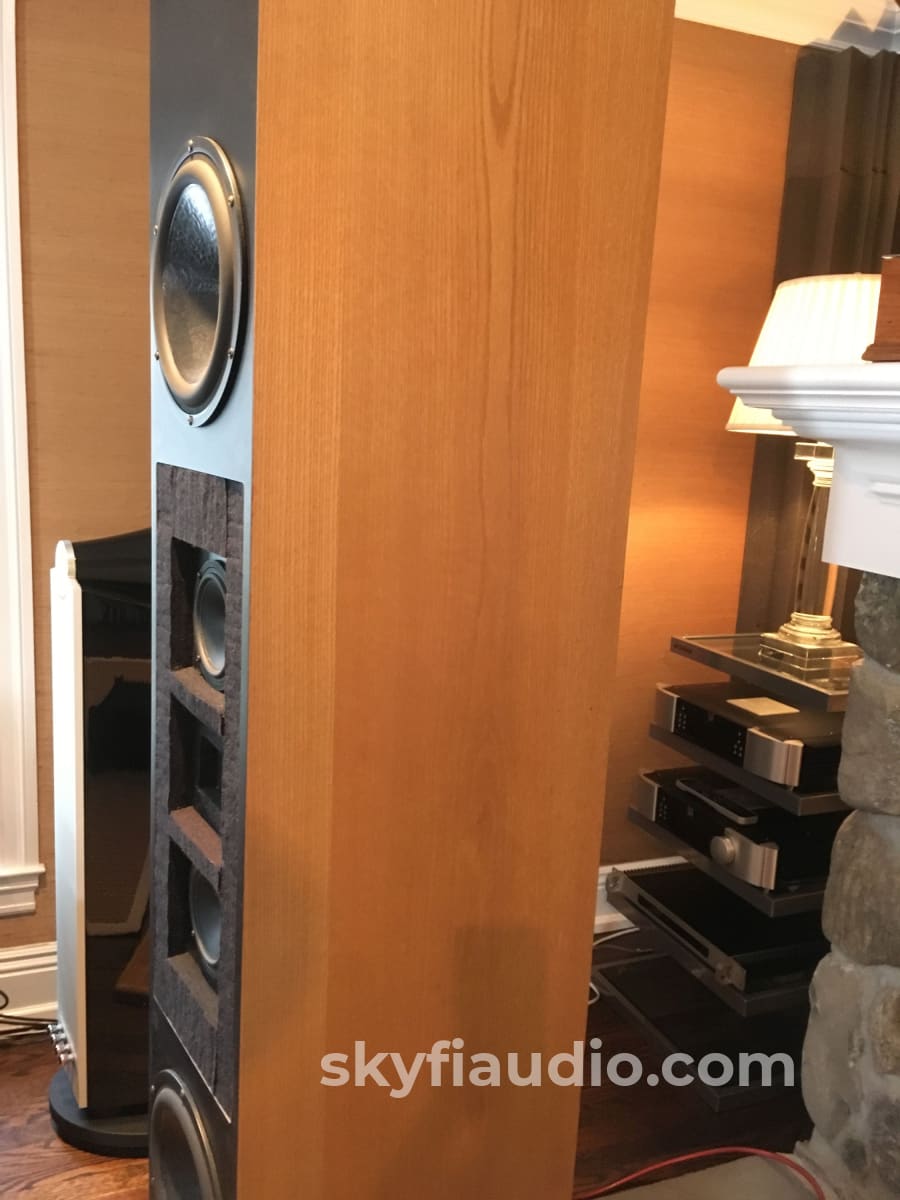
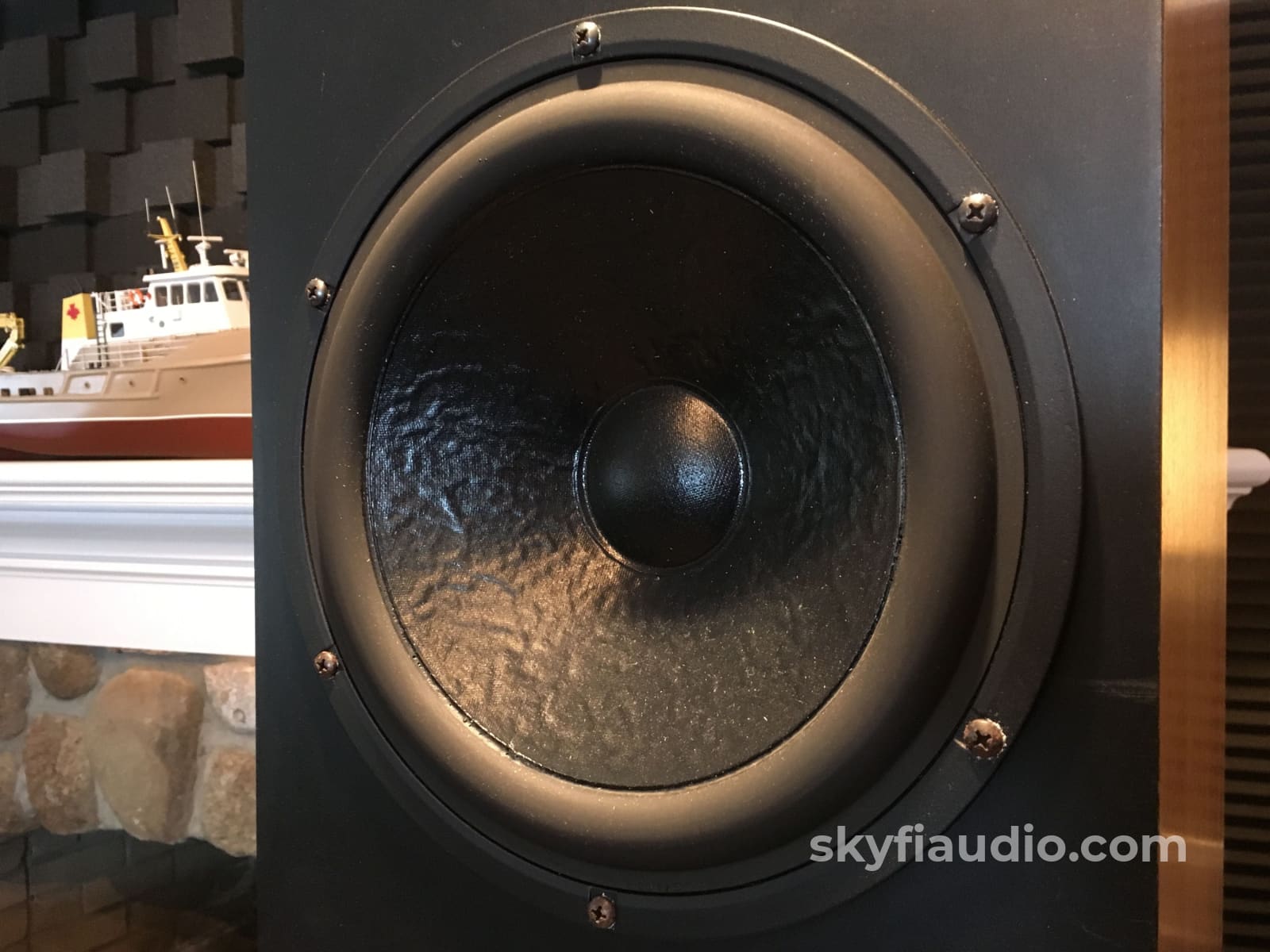
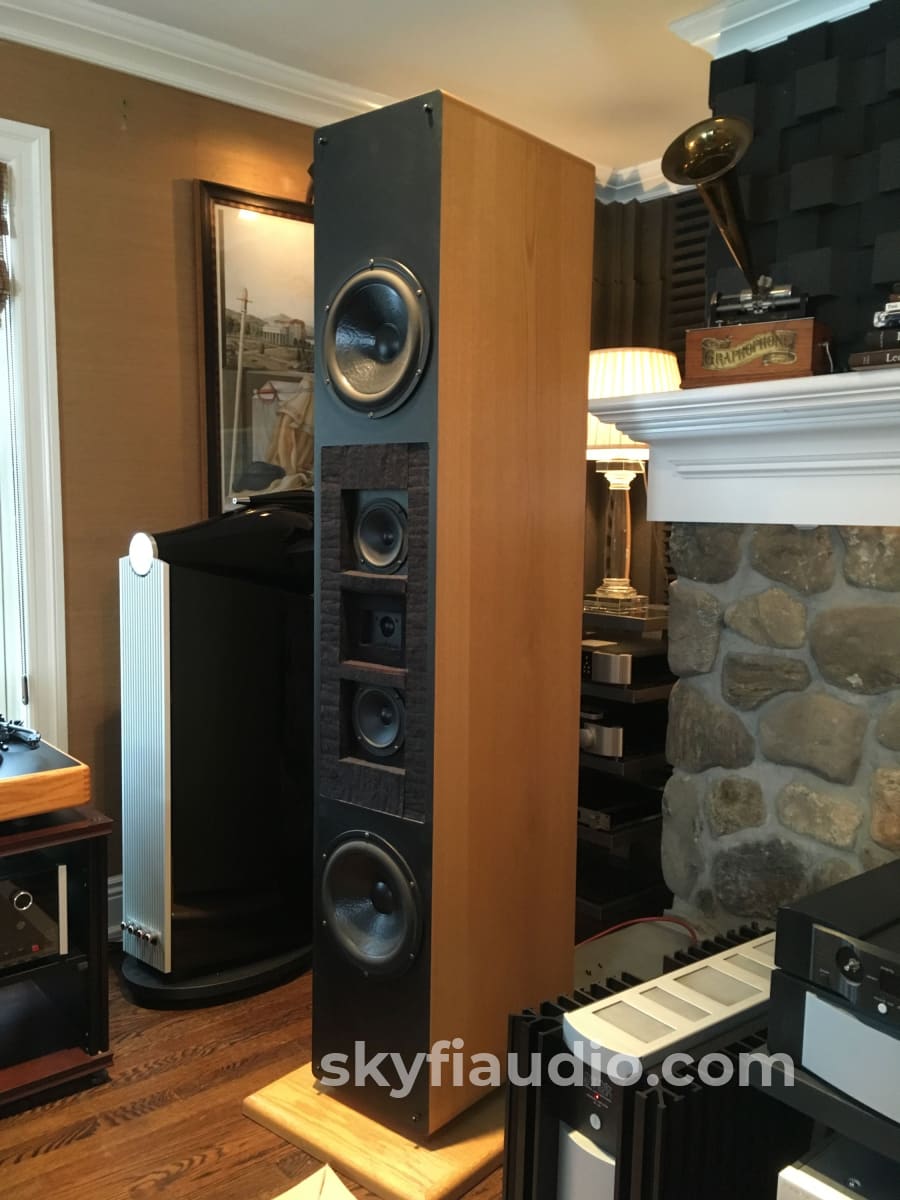
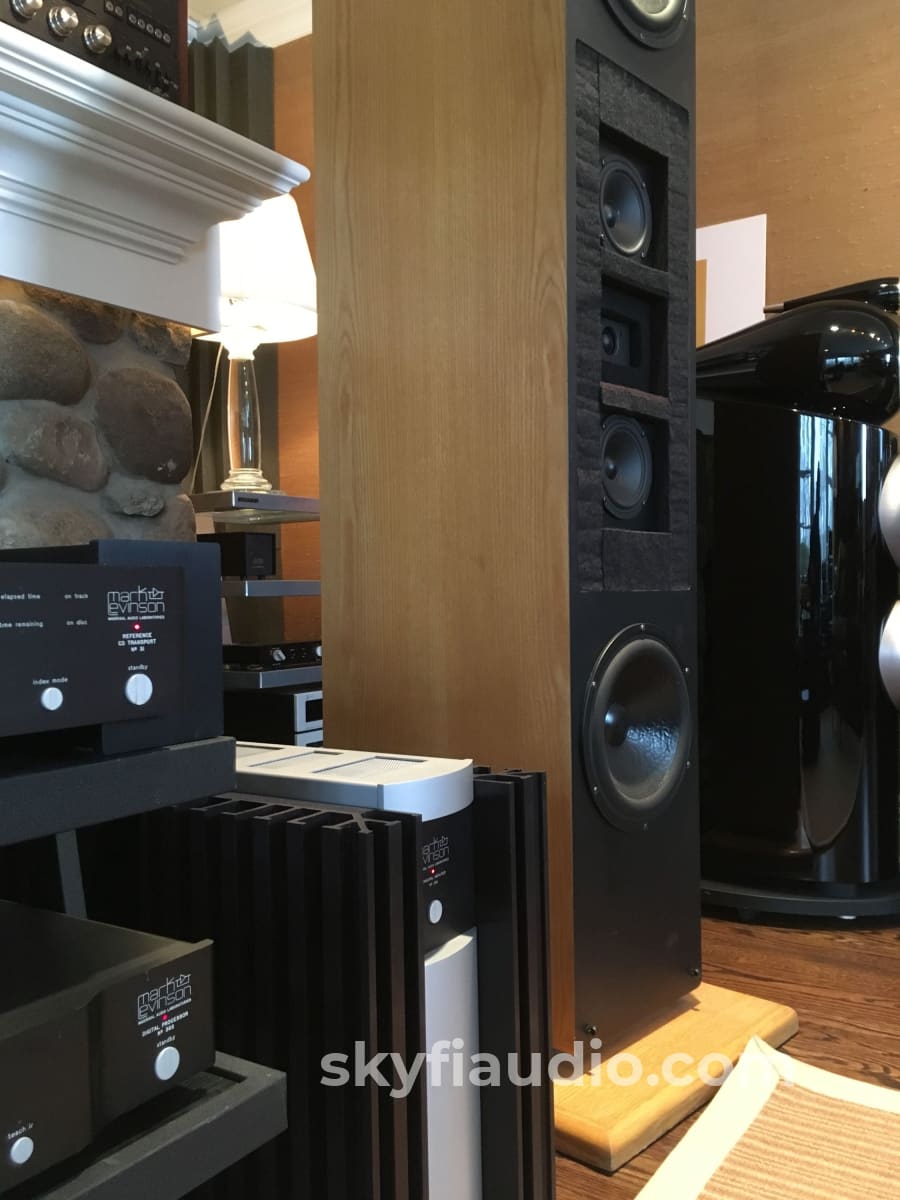
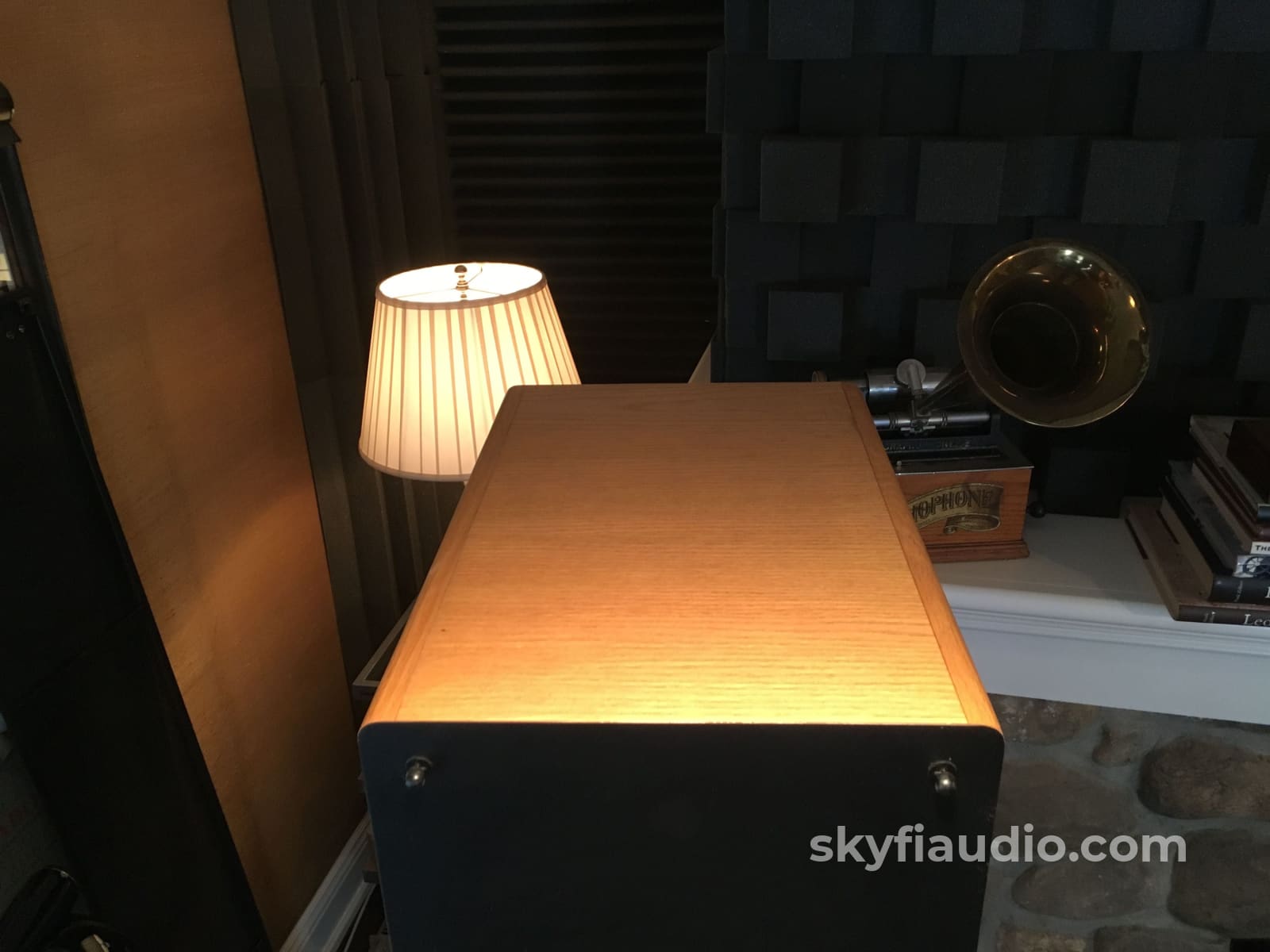
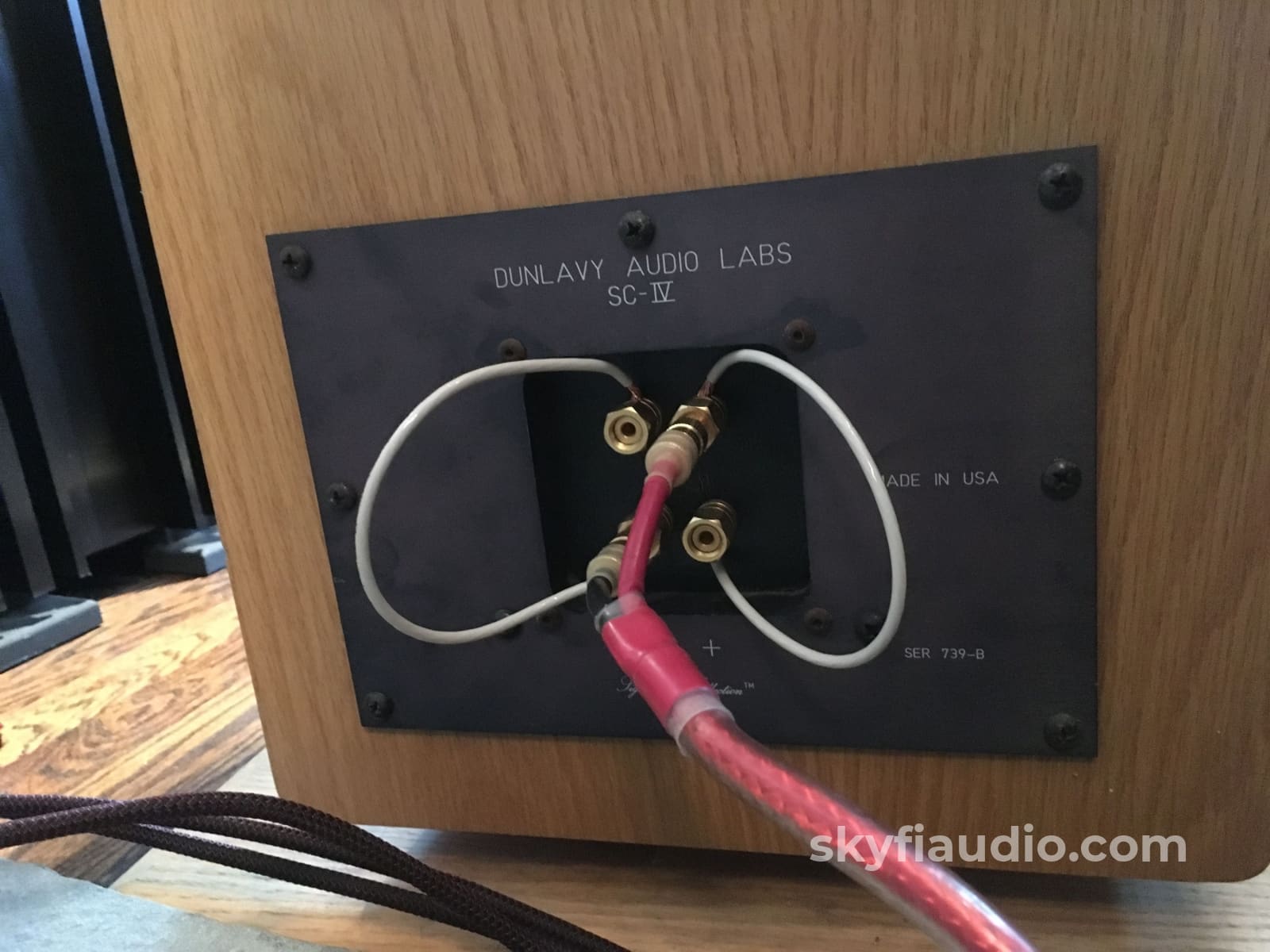
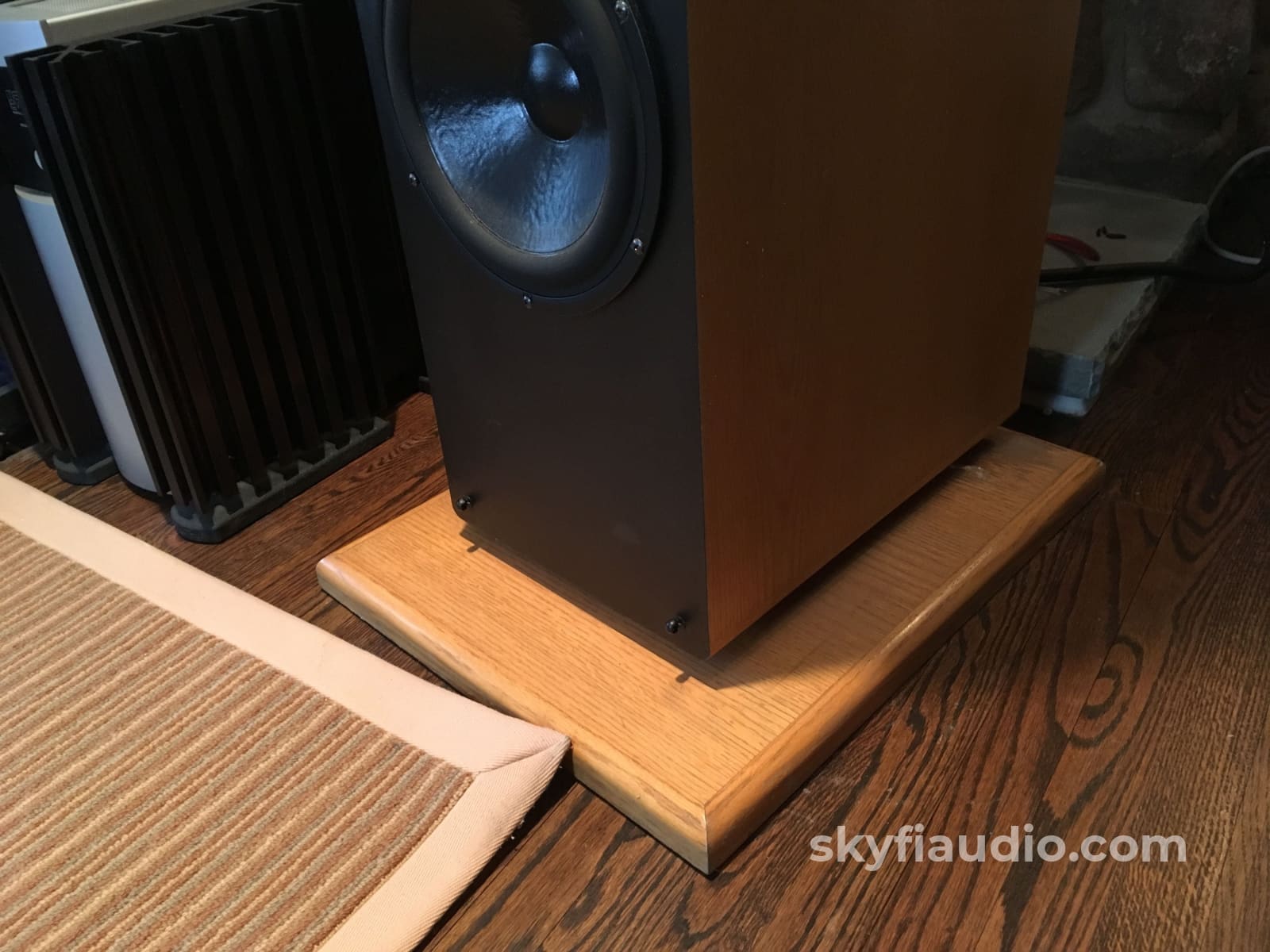
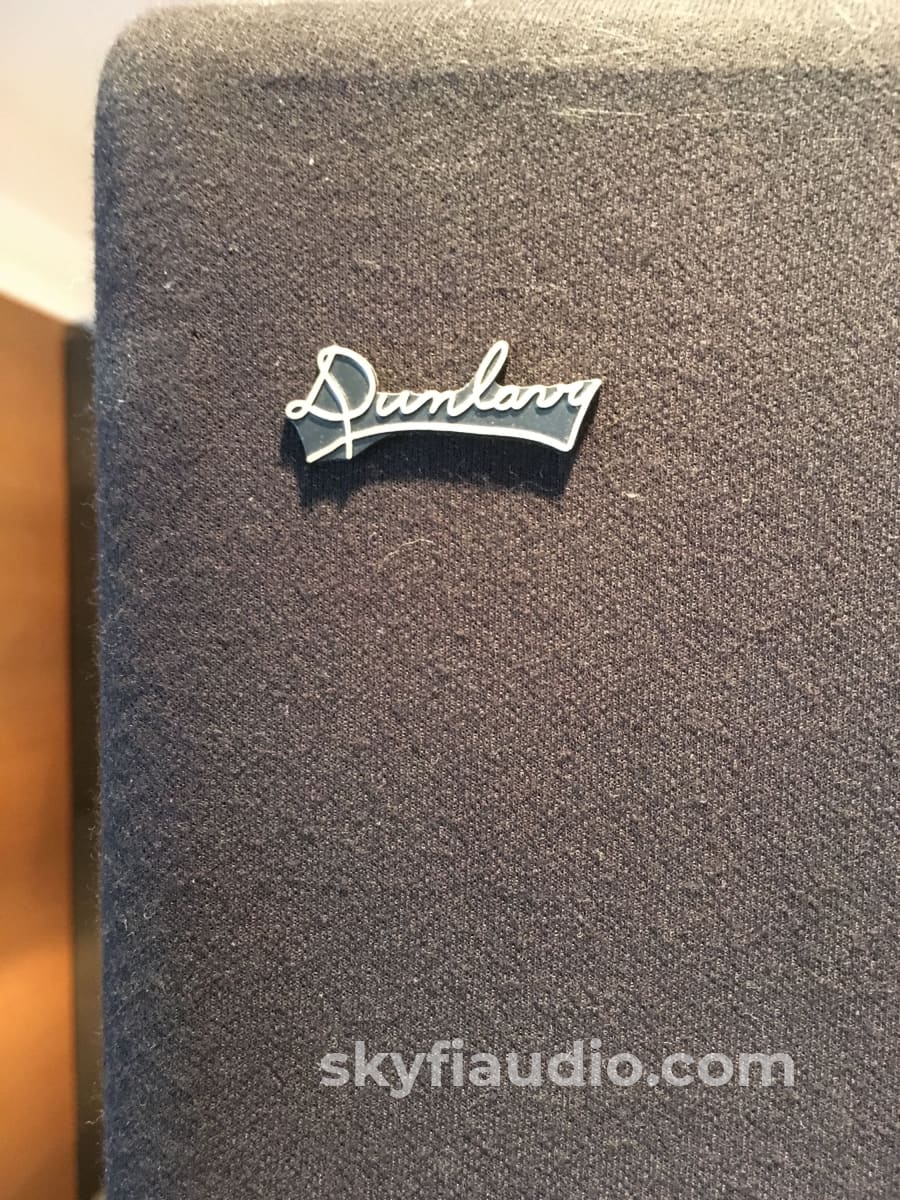
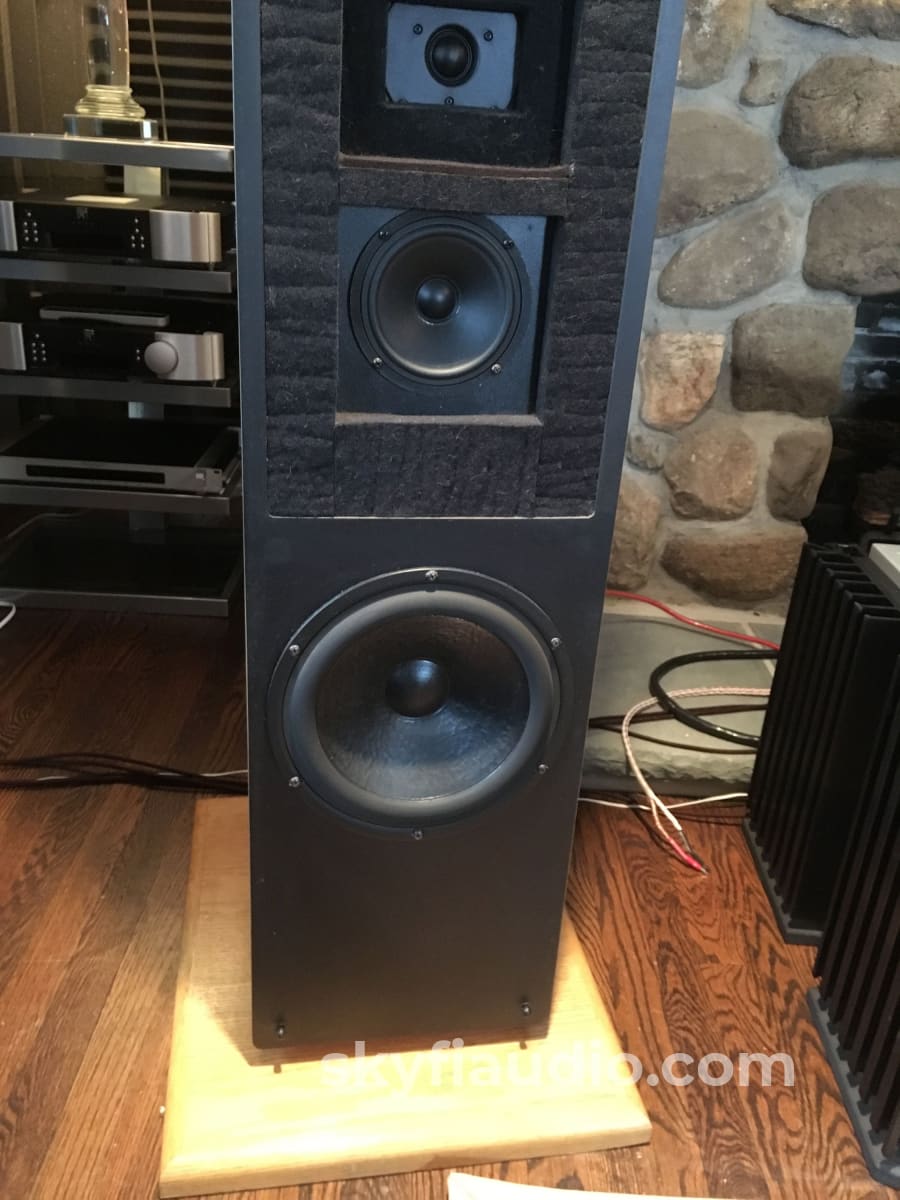
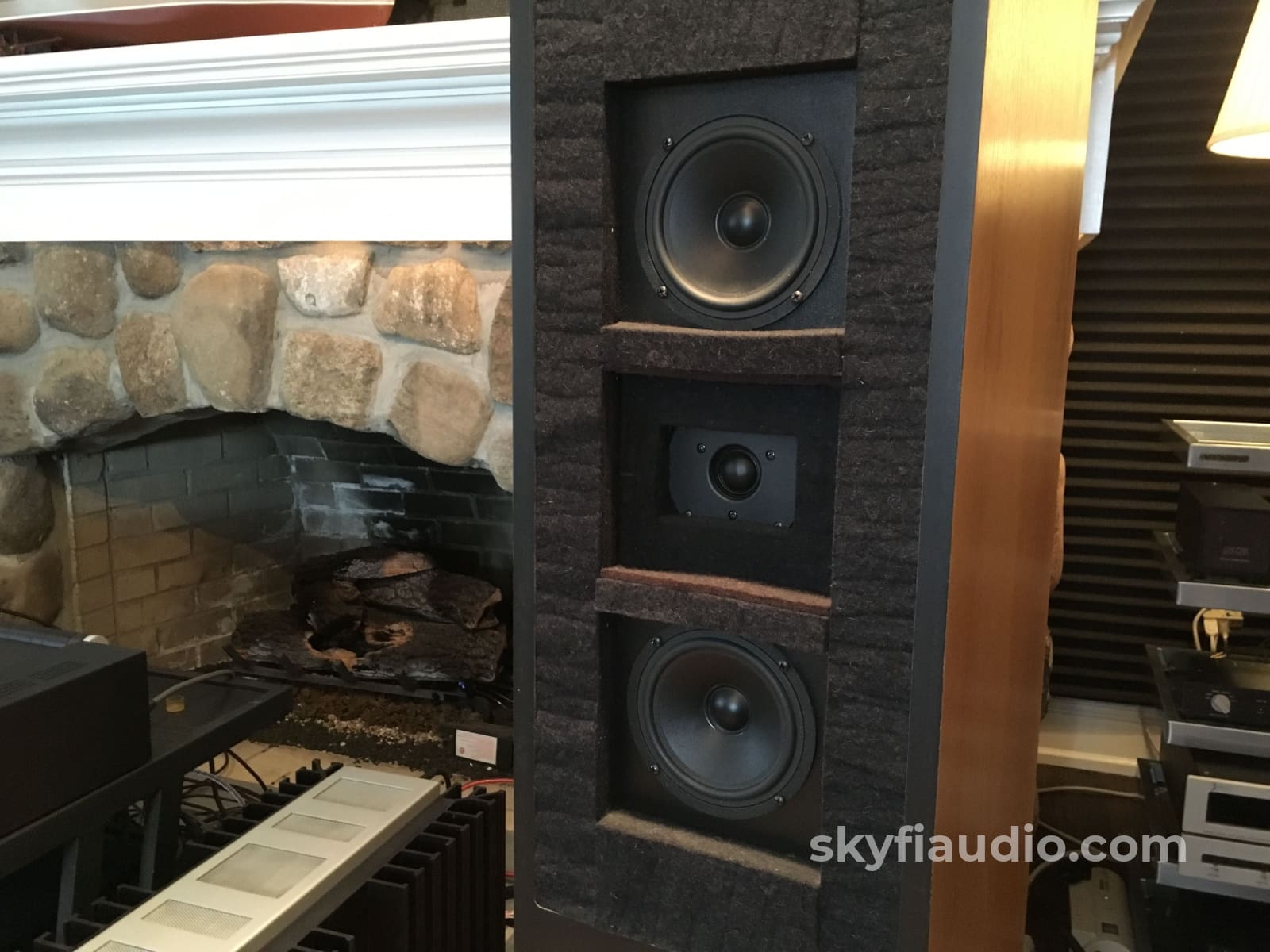
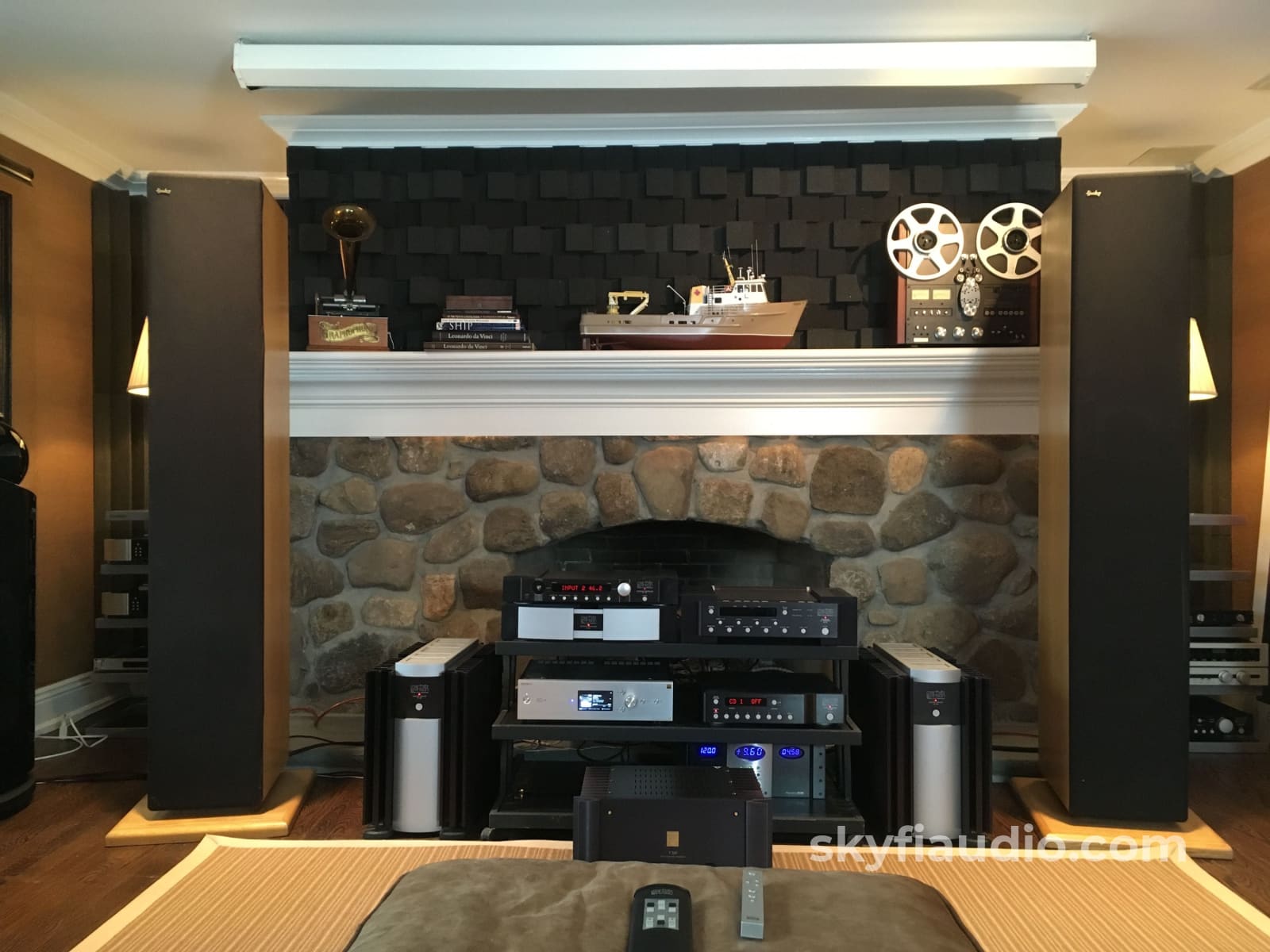
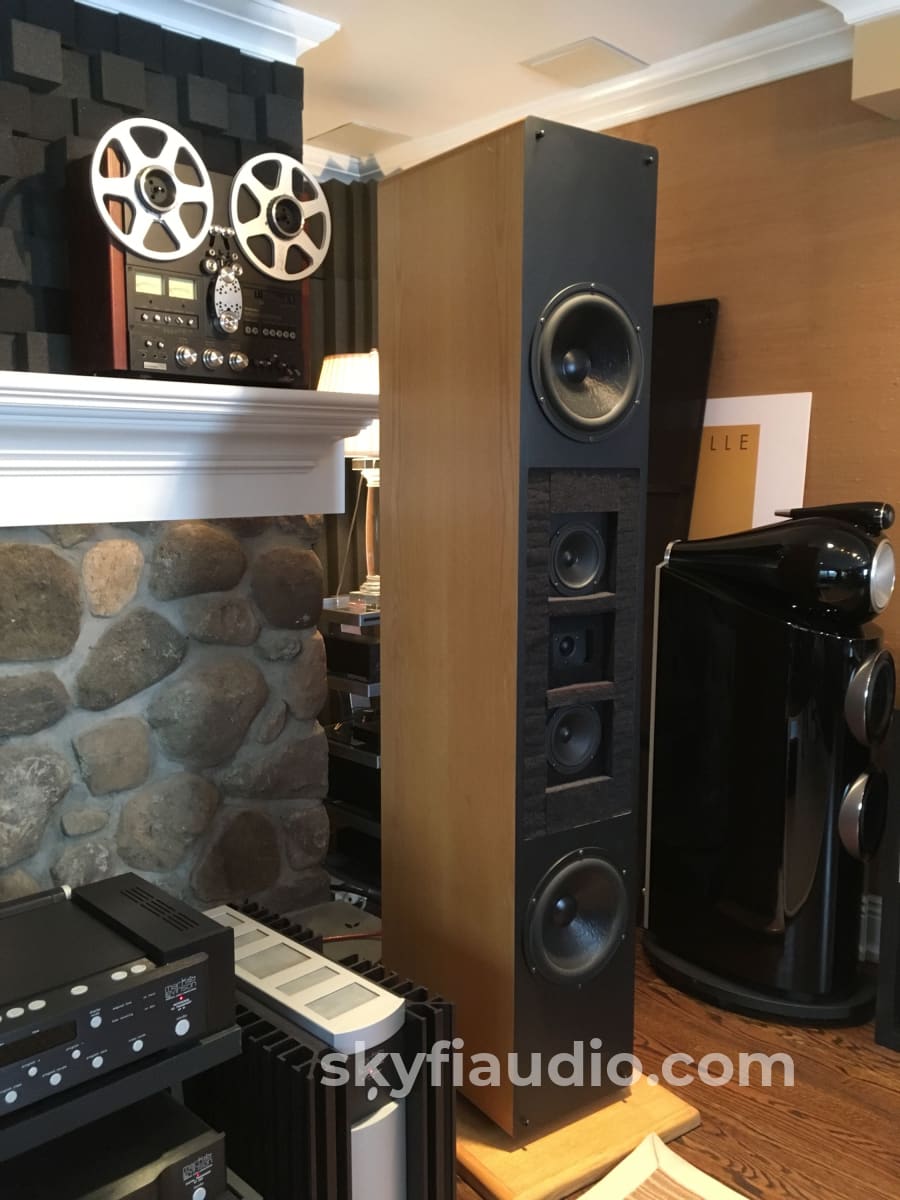
Dunlavy Audio Labs SC-IV Signature Collection Speakers
Free Shipping on Most Electronics - Excludes Speakers and Items Requiring Freight - Contiguous U.S. Only
Pickup currently unavailable at SkyFi 479

Dunlavy Audio Labs SC-IV Signature Collection Speakers
SkyFi 479
479 South Broad Street
Glen Rock NJ 07452
United States
You’re looking at a pair of rare and fantastic Dunlavy SC-IV speakers from acclaimed designer John Dunlavy.
Signature Collection, Made in USA!
Condition is overall very good, the drivers are in perfect condition with no signs of wear or abuse. The tweeters are perfect with no creases or dimples, the woofer surrounds are also perfect with absolutely no cracking or tearing, and the midranges are immaculate. The felt surrounds are clean and well secured.
The cabinets looks great with no deep scratches or blemishes other than the occasional light scuff mark. The bases are fair but have some slight discoloration near the back. The grills could use new fabric if your intent is to use them. The grill frames are steady and solid so it should be easy to recover them. I prefer to use these speakers without the grills because they look so impressive with all the drivers showing.
At 91db efficiency you’ll have great flexibility in choosing an amplifier. I’ve driven these at respectable volume levels with as little as 30w.
On the back you’ll find dual binding posts in case you’d like to bi-wire or bi-amplify them. They are mounted on a high quality anodized metal plate.
If you are looking to put together a home theater system with these I have available 3 x SC1 LCR speakers in the same finish that would complete the set. Please inquire.
Technical Specifications:
Description: Three-way dynamic loudspeaker. Drive-units: 1" composite textile-dome tweeter, two 5.5" paper-cone midranges, two 10" long-throw paper-cone woofers. Crossover: first-order design (frequencies not specified). Biwire and biamp capability. Frequency response: 25Hz-20kHz, ±1.5dB; -3dB at 20Hz (anechoic). Sensitivity: 92dB/W/m. Impedance: 5 ohms nominal; 3.0 ohms minimum, 7.5 ohms maximum. Recommended amplifier power: 50W minimum into 8 ohms. Recommended listening distance: 8-25'. Dimensions: 72" H by 12" W by 18" D. Weight: 190 lbs. Price: $7995/pair in light or black oak, $8495 for cherry and rosewood. Approximate number of dealers: 30. Manufacturer: Dunlavy Audio Labs, Inc., P.O. Box 49399, Colorado Springs, CO 80949-9399. Tel: (719) 592-1159. Fax: (719) 592-0859. Web:
Some Excepts from Stereophile written by Robert Deutsch:
Description & design It definitely takes two people to unpack and set up a pair of SC-IVs. The 6'-tall, 180-lb speakers, which are obviously well out of the minimonitor class, are likely to visually dominate all but very large rooms. However, the SC-IV's proportions are unusually pleasing, and the speaker is mounted on a stand/plinth in a manner that gives the impression that it's "floating" in the air, so the overall effect is not as massive as might be expected. The review pair was finished in flawless "architectural-grade" oak veneer. Removing the grille revealed a symmetrical arrangement of drivers that those familiar with Dunlavy's earlier Duntech designs will recognize: a centrally located fabric-dome tweeter, flanked by 5½" cone midrange units, with 10" woofers at the top and bottom. The tweeter and midrange are sourced from Vifa, with modifications (including damping of the tweeter's back wave) made at the factory, according to DAL's specifications. The tweeter is relatively inexpensive, but Dunlavy claims that, when modified, its performance exceeds that of the most exotic and expensive units on the market. The Morel woofers feature long-throw voice-coils. The tweeter and midrange drivers are in a sealed compartment that does not extend the full depth of the cabinet, leaving the rest of the cabinet (including the space behind the tweeter/midrange compartment) to serve as a common enclosure for the woofers. The 1"-thick MDF cabinet is heavily braced and filled with foam (Dunlavy believes that overdamping the woofer produces the most realistic bass response). As with Duntech speakers, there is extensive felt treatment around the tweeter and midrange drivers (footnote 4). Generically, the rather complex crossover falls into the minimum-phase, first-order (6dB/octave) category, but Dunlavy says it cannot be accurately described in terms of conventional slopes and crossover points. There's also a network to notch out the tweeter's resonant frequency and conjugate load matching to produce an easy impedance load. The SC-IV is set up for single or bi-wiring. The binding posts are extra-thick, which makes them incompatible with most spade lugs, and they're difficult to tighten properly. DAL's Quality Assurance process involves the testing of every component, subassembly, and assembled speaker.
Sound This is a fabulous speaker! On my first day with the review pair, with the drivers not broken-in and the setup not even close to being ideal, I was hearing things on familiar records that I'd never heard before. They continued to improve with playing, reaching higher and higher levels of performance as I tweaked the setup and worked at optimizing the selection of associated components. The most startling of the SC-IV's many strengths was the impression it gave of providing an unimpeded pathway to the musical source and to the sonic characteristics of other components in the reproduction chain. Call it transparency, revealingness, resolution, or clarity: The SC-IV had it in spades. With a good recording, the sound of instruments in an orchestra and individual voices in a chorus were presented with a timbral and spatial definition that was simply stunning.
Resolution, soundstaging, timbral accuracy, tonal balance, bass extension. What else is there to consider? Dynamics and "pace," that's what. Can the speaker, as Martin Colloms might say, boogie?
Concluding thoughts I started this review with a Dunlavy Audio Labs quote claiming that measurements can reliably predict a speaker's ability to reproduce music. The SC-IV is a result of this design approach: It measures exceedingly well, and sounds superb. Has John Dunlavy proven his hypothesis? Maybe yes, maybe no. The "academic" answer is that the evidence presented is consistent with the hypothesis, but does not by itself prove it. In order for measurements to be useful, we must know what to measure, how to measure it, and, once the measurements are collected, how to interpret them. This last phase is the most difficult, and it's here that I suspect that John Dunlavy's many years of experience in designing and building speakers is a factor, over and above the measurements themselves. Furthermore, although the DAL factory in Colorado Springs has a first-rate speaker-measurement facility, its listening room is also well set up, and Dunlavy has admitted to me that the development of his latest speakers has involved much more time spent in listening tests than in measuring per se. For the audiophile, of course, questions about the role of measurements in speaker design are, well, academic. We're more interested in the outcome than the process, and we use our ears to evaluate that. In fact, it was the sound of the SC-IV that first brought it to my attention. When I heard it at the 1993 Summer CES, I had the feeling that I was listening to something quite special. Having had a pair in my listening room for the past three months, I know the speaker is very special. In my opinion, it's not only an outstanding speaker for anything anywhere near its price level, it's also a genuine contender for Class A status [if it had true high-level extension to 20Hz, like DAL's larger SC-VI—Ed.]. It's been said (footnote 6) that if a reviewed component is really good, the reviewer should shed tears of sorrow while he or she boxes it up to return it to the manufacturer. We might call this the Audiophile Lachrymal Response Test (ALRT), and the speakers that I've had in my listening room for review in the past two years (Acarian Alán IV, Unity Audio Signature One, and Pyramid Signature) have all passed it—at least metaphorically. I must now admit that the DAL SC-IV did not pass the ALRT. Oh, I suppose it would have, but, anticipating extensive responsiveness on the ALRT, I decided not to put myself through this aversive experience. I'm buying the review pair.
Choose options















